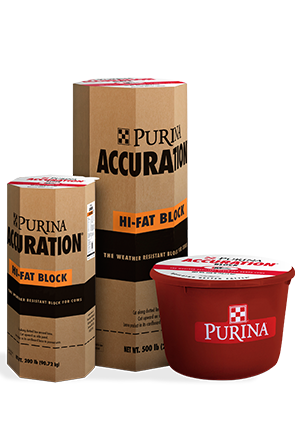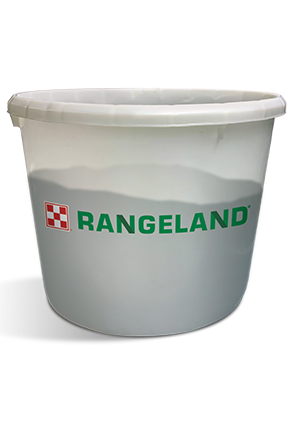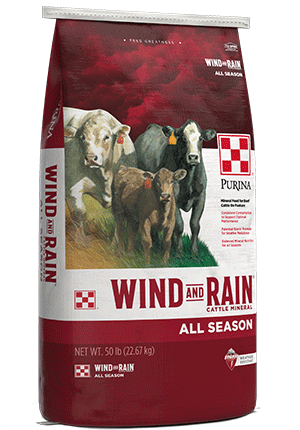
Fetal Programming Cattle Nutrition Tips for Each Trimester of Gestation
Management : Cow & Calf
Nutrition : Minerals
Nutrition : Supplements
A cow is never just eating for herself. At any given time of the year, a cow is either pregnant, nursing a growing calf or is pregnant and nursing a calf. What you feed that cow will impact not only her ability to perform but also her calf’s development and lifetime performance through fetal programming.
By providing adequate nutrition during each stage of development, you can maintain optimal body condition and support the calf’s birth and weaning weight, immune function, finishing growth and value to the herd if the calf is kept back.
Here’s a look into the nutritional needs during each trimester and how you can develop a nutrition program to support both the cow and the developing fetus:
The biggest milestone is placenta development. A healthy placenta is critical to supporting a viable, healthy pregnancy and the passage of nutrients from cow to calf. The second milestone is internal organ growth – lungs, kidney, liver, heart, brain, digestive system and reproductive organs.
During the first 30 days of gestation, the fetus is still under half an inch, meaning the nutrition requirement of the cow is low. But, that doesn’t mean you can lose focus on nutrition during this time.
Fall calving herds especially will need extra nutrition during the first trimester when grass is dormant and forage availability is low. Depending on forage quality, consider a balanced protein and energy supplement like Purina® Accuration® Hi-Fat Block or Purina® RangeLand® protein tub to extend grazing and help support fall calving cows during early gestation.
With adequate maternal nutrition, there’s a window of opportunity during the second trimester to set the calf up for optimal muscle fiber growth after birth. In turn, this leads to better weaning weight, growth and muscle potential, impacting the calf’s ability to have a good carcass weight and higher quality grades. Studies have shown that supporting the developing fetus during this stage of gestation resulted in improved marbling and tenderness and more gain at finishing.[1]
However, if nutrition is restricted during the second trimester, the developing fetus will direct nutrients towards limb and organ growth first, with muscle and fat development taking a hit.
It is important to have supplements available for the cow herd in the second trimester, particularly with spring calving herds. Purina® Accuration® supplements help balance the diet and optimize body condition score by providing the right mix of protein and energy.
Providing adequate cattle nutrition during this time is critical to prepare the calf for a good start and prepare the cow for a healthy birth. No matter the calving season, cows will need additional protein, energy and mineral to support the final growth stages. If forage quality is low and cows need extra nutrients, feed Purina® Accuration® Hi-Fat Block or Purina® Rangeland® protein tub to meet their energy needs.
For late-spring calving herds, don’t get caught in the trap of seeing green grass and thinking it will cover all the cow and developing calf’s nutritional needs. Keep a close eye on nutrient availability to determine what additional minerals, vitamins, protein and energy are needed during the third trimester.
The goal of any maternal feeding program is to meet the cow’s nutritional needs in each stage to avoid playing catch-up later. If you can maintain condition year-round, it not only impacts gestation but also supports reproductive success.
Does your cattle nutrition program stack up? Find out with a Proof Pays trial.
By providing adequate nutrition during each stage of development, you can maintain optimal body condition and support the calf’s birth and weaning weight, immune function, finishing growth and value to the herd if the calf is kept back.
Here’s a look into the nutritional needs during each trimester and how you can develop a nutrition program to support both the cow and the developing fetus:
First trimester
The first trimester sets the foundation for fetal programming and successful gestation. Important milestones are occurring that can have a long-term impact on calf performance.The biggest milestone is placenta development. A healthy placenta is critical to supporting a viable, healthy pregnancy and the passage of nutrients from cow to calf. The second milestone is internal organ growth – lungs, kidney, liver, heart, brain, digestive system and reproductive organs.
During the first 30 days of gestation, the fetus is still under half an inch, meaning the nutrition requirement of the cow is low. But, that doesn’t mean you can lose focus on nutrition during this time.
Fall calving herds especially will need extra nutrition during the first trimester when grass is dormant and forage availability is low. Depending on forage quality, consider a balanced protein and energy supplement like Purina® Accuration® Hi-Fat Block or Purina® RangeLand® protein tub to extend grazing and help support fall calving cows during early gestation.
Second trimester
The focus for fetal development in the second trimester is on muscle tissue development, adipogenesis (or fat deposition), limb growth and organ development.With adequate maternal nutrition, there’s a window of opportunity during the second trimester to set the calf up for optimal muscle fiber growth after birth. In turn, this leads to better weaning weight, growth and muscle potential, impacting the calf’s ability to have a good carcass weight and higher quality grades. Studies have shown that supporting the developing fetus during this stage of gestation resulted in improved marbling and tenderness and more gain at finishing.[1]
However, if nutrition is restricted during the second trimester, the developing fetus will direct nutrients towards limb and organ growth first, with muscle and fat development taking a hit.
It is important to have supplements available for the cow herd in the second trimester, particularly with spring calving herds. Purina® Accuration® supplements help balance the diet and optimize body condition score by providing the right mix of protein and energy.
Third trimester
Nutrient demands are the highest in the third trimester because 75% of fetal growth happens during this time. Plus, calves are going through final lung development, which is key to respiratory health and corresponding disease challenges once the calf is born.Providing adequate cattle nutrition during this time is critical to prepare the calf for a good start and prepare the cow for a healthy birth. No matter the calving season, cows will need additional protein, energy and mineral to support the final growth stages. If forage quality is low and cows need extra nutrients, feed Purina® Accuration® Hi-Fat Block or Purina® Rangeland® protein tub to meet their energy needs.
For late-spring calving herds, don’t get caught in the trap of seeing green grass and thinking it will cover all the cow and developing calf’s nutritional needs. Keep a close eye on nutrient availability to determine what additional minerals, vitamins, protein and energy are needed during the third trimester.
Year-round nutrition
Each trimester has unique nutritional needs to meet the cow and calf’s growth, development and maintenance requirements. Mineral is important throughout the year, no matter the stage of gestation. Use a mineral balanced for macro and micro minerals, like Purina® Wind and Rain® minerals, to meet your herd’s nutritional needs for health, growth and reproduction.The goal of any maternal feeding program is to meet the cow’s nutritional needs in each stage to avoid playing catch-up later. If you can maintain condition year-round, it not only impacts gestation but also supports reproductive success.
Does your cattle nutrition program stack up? Find out with a Proof Pays trial.
[1] Du M, Ford SP and Zhu MJ. 2017. Optimizing livestock production efficiency through maternal nutritional management and fetal developmental programming. Washington State University and University of Wyoming. Animal Frontiers.





